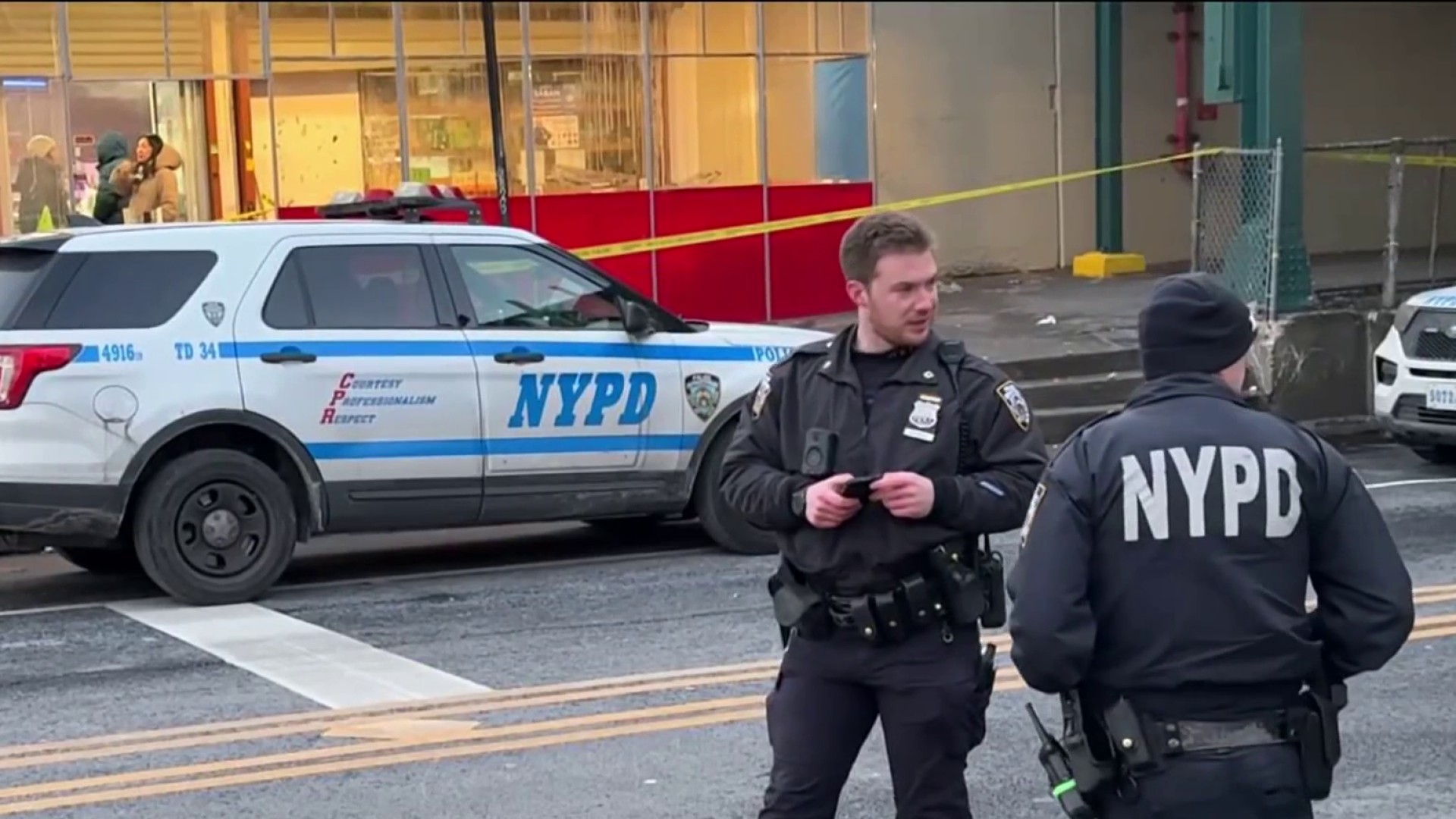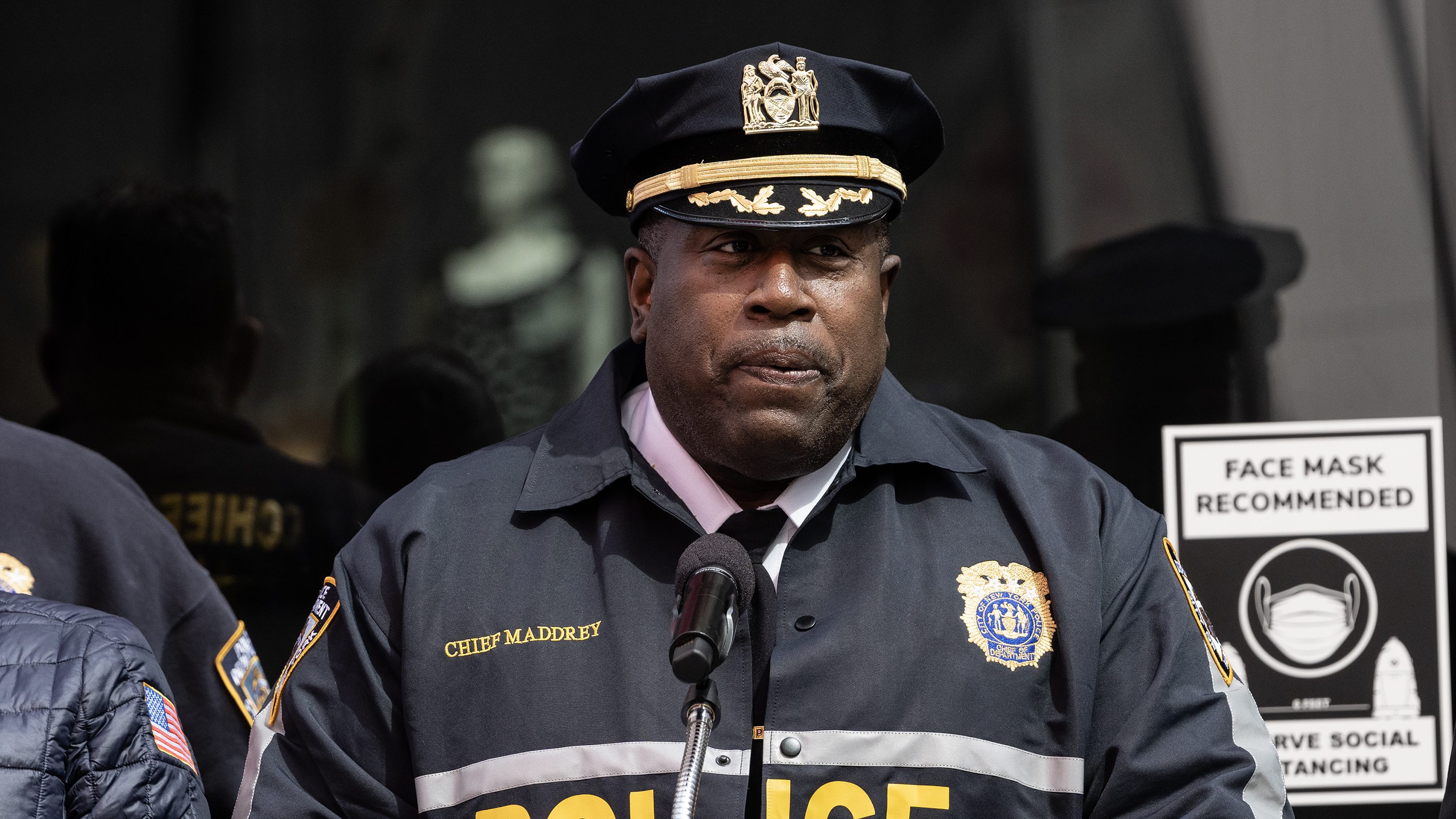An escaped carriage horse bolted through the streets of midtown on Tuesday evening, sparking condemnation from a group that hopes to put an end to the carriage horse business in New York.
Newly released surveillance video shows the horse dashing past an SUV on 51st Street after breaking free from its stable at 11th Avenue and West 52nd Street.
Video posted to social media by Brooke Fedigan shows the horse running down West 54th Street. Fedigan's husband was driving east down the street, when the couple had a close encounter with the beast.
"It cut our car off; we were like, 'Whoa, what was that?'" Fedigan said. "We almost hit the horse."
Fedigan can be heard saying, "Stop the horse! Stop the horse!" as the animal gallops in front of her car. She said the horse was going at full speed as it ran.
Deliveryman Angel Diaz tried to corral the horse as it headed for the congested West Side Highway.
"I jumped out of my car, and was like, 'Whoa, slow down,' and she was kind of like, kind of skeptical about it," Diaz said. "But eventually she slowed down and I grabbed her halter."
Eleven blocks after her adventure began, Clinton Park stable managers said Goldie the horse ran back to the stable on her own. They said a veterinarian checked her out and said she was okay.
Local
Clinton Hill manager Conor McHugh said the drama unfolded after Goldie took a wrong turn at the stable. She was getting unharnessed and walked down a ramp that exited onto the street, he said.
Carriage driver Basil Northam said it wasn't a big deal.
"Goldie went to work; it was a a slow day," Northam said. "She thought, 'I didn't get enough exercise.'"
But witnesses said people and the horse could've been hurt.
"It looked scared," Fedigan said.
NYCLASS, an advocacy group trying to ban horse carriages in the city, said in a statement that Tuesday’s escape was just the latest incident of many.
“Enough is enough,” the group said in a statement. “It shouldn’t take the death of a beautiful horse for city leaders to take action.”
The group said Mayor de Blasio “needs to remove his blinders and take immediate action to ensure this never happens again.”
Earlier this month, a horse was hit by a taxi in the heart of midtown. The horse was waiting an examination from a veterinarian and its condition wasn’t known.
In February, a horse collapsed in Central Park, sparking calls for an investigation into the horse’s welfare. The city said the horse only tripped and was back at work a short time later.
A much-debated plan to dramatically overhaul the carriage horse industry collapsed in February 2016, with the city council pulling the reins on a plan that would have limited the tourist-toting animals to a small section of Central Park.
The colorful coaches, which have clip-clopped through Manhattan for more than 150 years, are frequently depicted on television and in movies and are billed as a must-do for visitors who delight in romantic rides past some of the city's top tourist attractions and along the graceful, winding paths of Central Park.
But others decried the trade, saying Manhattan's loud, traffic-clogged streets were no place for the animals and called for the industry to be shuttered. They appealed to Mayor Bill de Blasio — many via generous campaign donations — and he vowed to end the practice on the first day of his term.
The deal has been a debacle for de Blasio since he took office. Though many New Yorkers seemed blase about the issue, it assumed an outsized role in the city's political discourse.
A media blitz, led in part by actor Liam Neeson and launched to counter the ones funded by the animal rights groups, portrayed the horse-drawn carriage industry as an essential part of New York that provides about 400 jobs, many to Irish immigrants.
The next blow came when a series of city unions, usually de Blasio's staunchest allies, broke with the Democratic mayor, urging him to reconsider his decision in order to save not only the jobs but a profitable source of tourism. The New York Daily News then launched a front-page campaign called "Save our Horses." And public polls consistently showed a majority of New Yorkers did not favor a ban.
Eventually, a compromise between the mayor, the city council and the union that represents the horse carriage drivers was struck, and horses remain on city streets.



